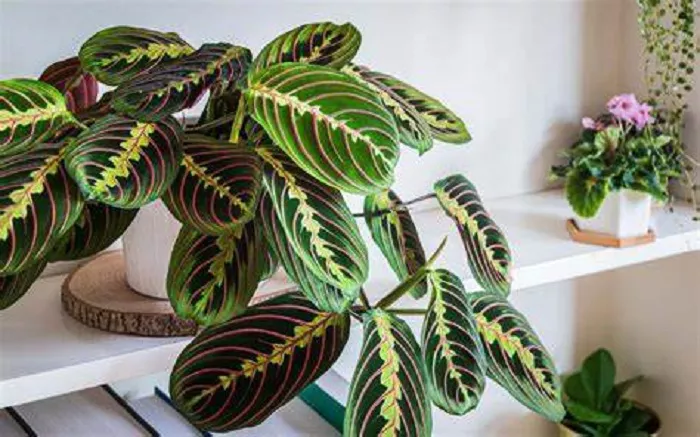Prayer plants, with their mesmerizing foliage and unique movement patterns, have long been cherished by gardening enthusiasts. These plants, scientifically known as Maranta leuconeura, are not only visually appealing but also fascinating in their behavior. As they fold their leaves upward during the night, resembling hands in prayer, they capture the imagination of many. But how long can these delightful plants live? This article delves into the lifespan of prayer plants, exploring factors that influence their longevity and offering tips to help you nurture them to their full potential.
Understanding the Lifespan of Prayer Plants
The Natural Lifespan
In their natural habitat, prayer plants can live for several years. Typically, a healthy prayer plant can thrive for about 3 to 5 years. However, with proper care and optimal growing conditions, some specimens have been known to live even longer, up to 10 years or more. The key to extending their lifespan lies in understanding their specific needs and providing a suitable environment.
Factors Influencing Longevity
Several factors can impact the lifespan of a prayer plant. These include environmental conditions, care practices, and potential health issues. By addressing these factors, you can significantly enhance the longevity of your prayer plant.
Environmental Conditions
Prayer plants are native to the tropical rainforests of Brazil. They thrive in warm, humid environments with indirect sunlight. Temperature plays a crucial role in their health. These plants prefer temperatures between 65°F and 80°F (18°C to 27°C). Exposure to extreme temperatures, either too hot or too cold, can stress the plant and shorten its lifespan.
Humidity is another critical factor. Prayer plants require high humidity levels, ideally between 50% and 70%. In dry climates, using a humidifier or placing a tray of water near the plant can help maintain the necessary moisture levels. Low humidity can lead to leaf browning and curling, which are signs of stress.
Light is also important. Prayer plants need bright, indirect light. Direct sunlight can scorch their leaves, while insufficient light can result in poor growth and faded leaf patterns. Placing the plant near a north or east-facing window is ideal.
Care Practices
Proper watering is essential for the health of prayer plants. They prefer consistently moist soil but do not like to sit in water. Overwatering can lead to root rot, a common cause of plant death. On the other hand, underwatering can cause the leaves to wilt and dry out. It is important to find a balance. Water the plant when the top inch of soil feels dry to the touch.
Fertilization is another important aspect of care. Prayer plants benefit from regular feeding during the growing season, which is typically spring and summer. A balanced, water-soluble fertilizer applied every 4 to 6 weeks can provide the necessary nutrients for healthy growth. Avoid fertilizing during the dormant period in winter, as this can lead to salt buildup in the soil.
Pruning can also help maintain the health and appearance of your prayer plant. Regularly removing dead or damaged leaves not only improves the plant’s appearance but also reduces the risk of disease. Additionally, pruning can encourage bushier growth and prevent the plant from becoming too leggy.
Common Health Issues
Despite their hardiness, prayer plants can face several health issues that may affect their lifespan. Pests such as spider mites, mealybugs, and aphids can infest the plant, causing damage to the leaves and overall health. Regularly inspecting the plant for signs of pests and treating infestations promptly can prevent significant damage.
Fungal and bacterial diseases can also pose a threat. Overwatering and poor air circulation can create conditions conducive to the growth of pathogens. Signs of disease include yellowing leaves, leaf spots, and a foul odor. Proper watering practices and ensuring good air circulation around the plant can help prevent these issues.
Extending the Lifespan
To maximize the lifespan of your prayer plant, it is essential to provide consistent care and monitor its health closely. Here are some tips to help you nurture your prayer plant to its full potential:
Optimal Growing Conditions
Temperature: Maintain a temperature range of 65°F to 80°F (18°C to 27°C).
Humidity: Aim for humidity levels between 50% and 70%. Use a humidifier or a tray of water if necessary.
Light: Provide bright, indirect light. Avoid direct sunlight to prevent leaf scorching.
Care Practices
Watering: Keep the soil consistently moist but avoid overwatering. Water when the top inch of soil feels dry.
Fertilization: Apply a balanced, water-soluble fertilizer every 4 to 6 weeks during the growing season. Avoid fertilizing in winter.
Pruning: Remove dead or damaged leaves regularly to maintain the plant’s health and appearance.
Pest and Disease Management
Pest Control: Regularly inspect the plant for signs of pests and treat infestations promptly.
Disease Prevention: Ensure proper watering practices and good air circulation to prevent fungal and bacterial diseases.
Conclusion
Prayer plants are beautiful and fascinating additions to any home garden. With a natural lifespan of 3 to 5 years, these plants can thrive for a decade or more with proper care. By providing optimal growing conditions, following good care practices, and addressing potential health issues, you can enjoy the unique beauty of your prayer plant for many years to come. Remember, a little attention and care can go a long way in extending the life of these delightful plants.


